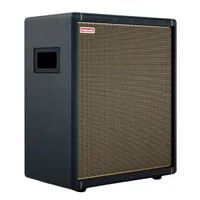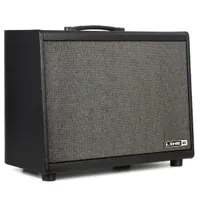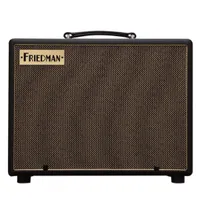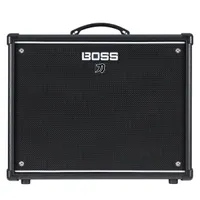Best FRFR speakers 2025: transparent tone for multi-effects and amp modelers
Get the most out of your digital modeler with the best FRFR speakers, from on-the-go options to arena-filling mammoths
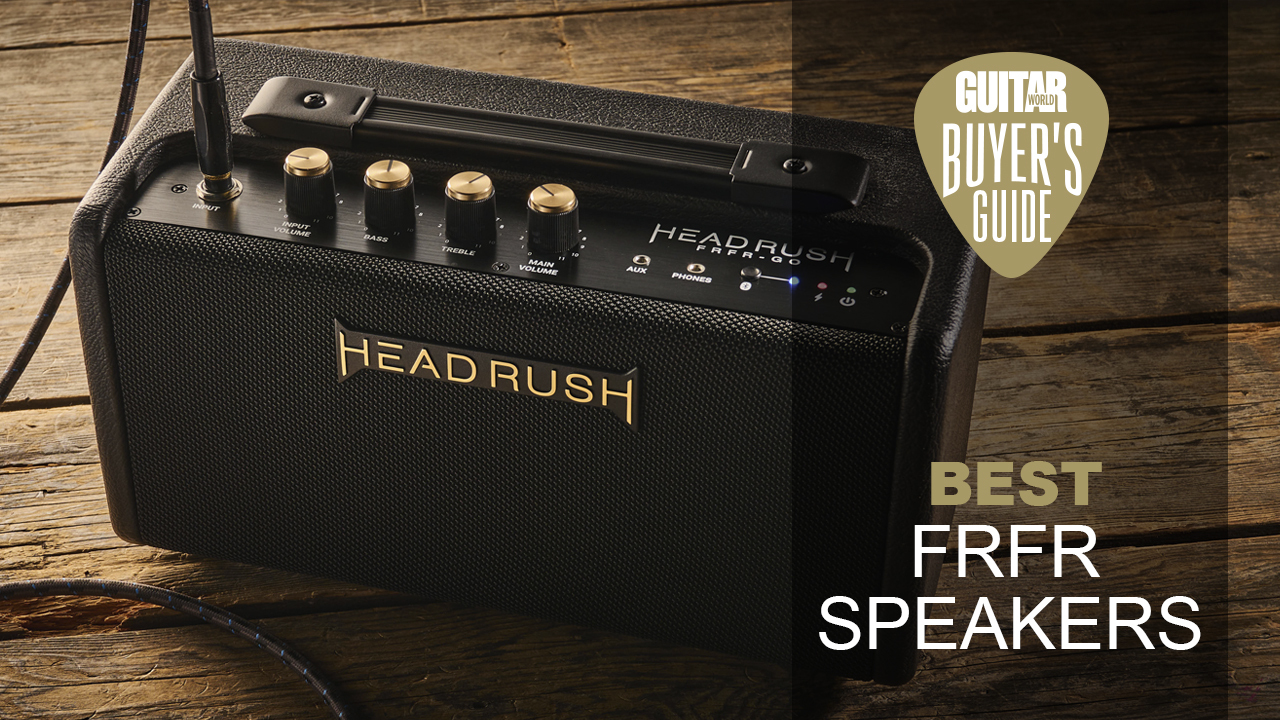
So, you’ve just forked out $1,000-plus bucks on a shiny new floor modeler and spent hours crafting your dream tone, but when it comes to unleashing it on the rest of the world… it just doesn’t feel right. That visceral feeling of air wafting from your amp’s speaker isn’t there, and all the energy you’re used to with a traditional amp is gone. If this is you right now, then getting your hands on one of the best FRFR speakers will help you solve this common issue.
Standing for ‘full range, flat response’ these speakers work in a totally different way from your standard guitar amplifier. With a traditional guitar amp, you want the amp to color your tone, that’s the whole point of choosing a specific model. However, FRFR speakers are designed to best reflect that expensive new floor modeler you just purchased. FRFR speakers won’t color your sound or add any unwanted frequencies, providing a true picture of your guitar tone.
In the world of guitar amplification, FRFR speakers are quite a new technology, so you may have a few questions, however, you’re in luck. If you’re looking at buying an FRFR speaker for the first time, make sure to check out our FAQs section for loads of useful advice. If you already know your stuff, then keep scrolling to see our favorites.
On the hunt for guitar gear savings this Black Friday? Shop our handpicked selection of the best Black Friday guitar deals.
Our top picks
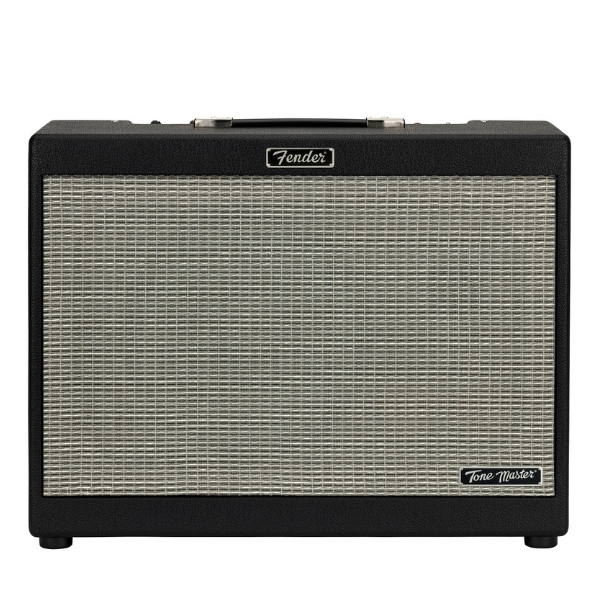
The Fender Tone Master FR-12 looks like a Fender amp, which we're big fans of here. If you don't like the 'PA speaker' look of others, this is a great choice, and offers superb quality sound to match its fantastic good looks.
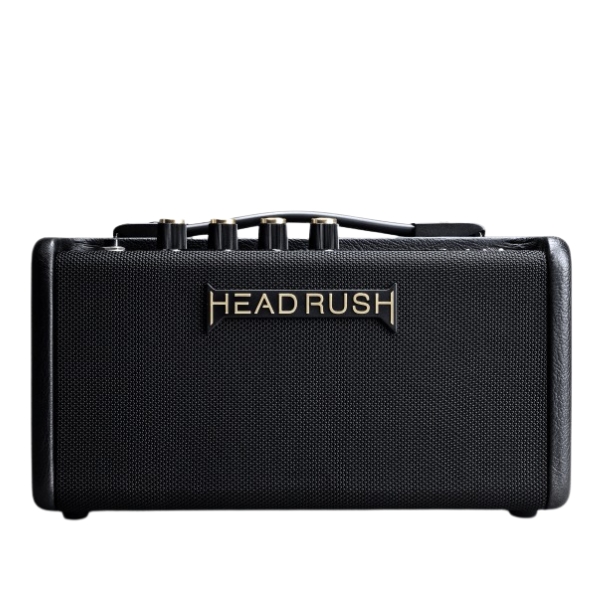
Although not suited to gigging, if you just need a great value FRFR speaker for home use, the HeadRush FRFR-Go is our favorite. It's packing 30 watts of power which is plenty for practicing at home, and it's nice and lightweight too.
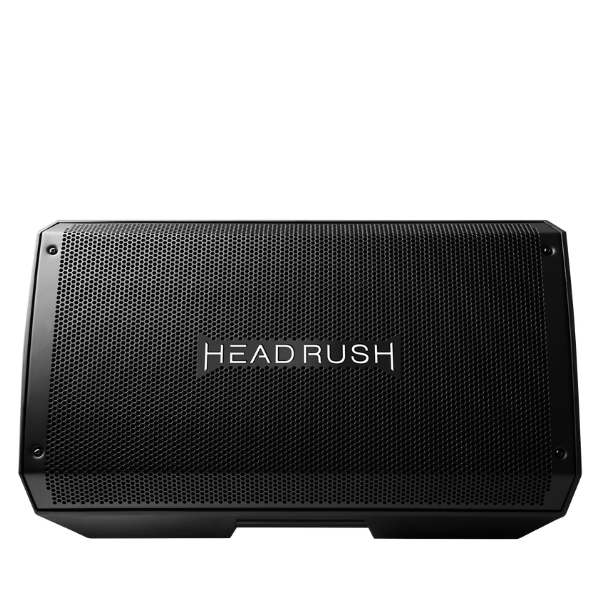
If you're planning on gigging with your amp modeler we'd go for the HeadRush FRFR-112. Able to be used as a wedge monitor it's great for monitoring your on-stage sound and with 1000W of power, plenty loud enough to overpower your drummer.
Best overall
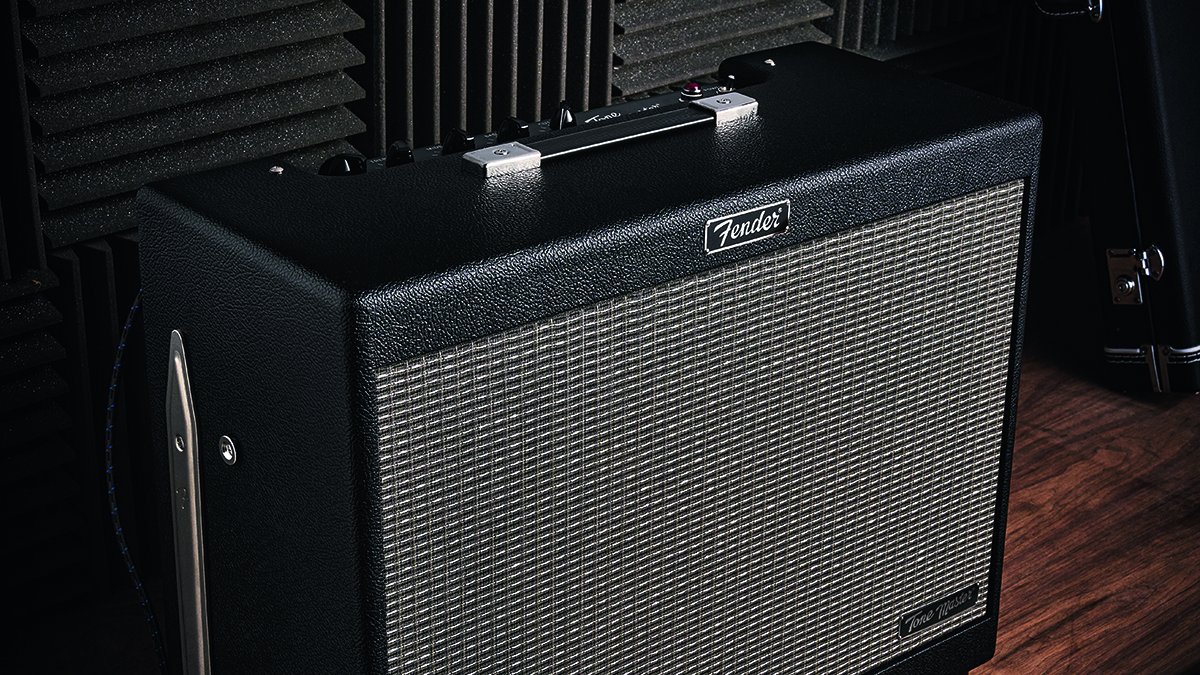
Specifications
Reasons to buy
Reasons to avoid
✅ Buy if you want the best of the best: Marrying superb good looks with a fantastic quality sound, the Fender Tone Master FR-12 is a brilliant FRFR speaker for all kinds of guitar players.
❌ Avoid if you want true FRFR: This speaker has some built-in EQ , which means it's technically not flat response.
Build quality: ★★★★★
Usability: ★★★★★
Sound: ★★★★★
Overall: ★★★★★
With Fender’s history of pioneering tube amplification, it’s hard to believe that it's stepped foot into the world of FRFR speaker cabinets – but we’re glad it has. Released specifically to pair with its Tonemaster Pro floor modeler, this speaker cabinet has been expertly crafted to deliver precision replications of your digital amplifiers and effects without any coloration.
With 1000W of power, this has more than enough volume to deliver at pretty much any gig, and the built-in EQ – featuring treble, middle, bass, and a high-frequency cut – is really useful for quick alterations, for example, if you’re in a venue which has a lot of boomy low-end. It is worth saying, the addition of this EQ does mean it isn’t truly flat response, and the DI results from your modeler may sound different from what you get on stage.
You’ll want to take this to as many stages as possible, partly because its lightweight plywood construction means it’s effortless to move, but mainly because this is hands-down the best-looking FRFR speaker on the market. Only the most astute audience members would notice that this cabinet isn’t one of Fender’s classic tube combos, as it’s been designed with all the cues we’re all used to – even down to the metal kickback arms.

"Fender’s FR-12 is a great solution to modeler amplification, combining classic good looks with prodigious power and clarity."
Read our full Fender Tone Master FR-12 review
Best budget

Specifications
Reasons to buy
Reasons to avoid
✅ Buy if you're on a budget: Most FRFR speakers aren't exactly what you'd call affordable, but at around the $140 mark the FRFR-Go is a great choice for the more budget-conscious.
❌ Avoid if you want to gig: Being a smaller speaker designed for home use, this won't be any good if you're planning on gigging with your amp modeler.
Build quality: ★★★★½
Usability: ★★★★★
Sound: ★★★★★
Overall: ★★★★★
Portable amplifiers aren’t a new phenomenon—Marshall’s Micro Amp is iconic among seasoned guitarists, paving the way for countless other brands to follow. However, the world of FRFR speakers has lagged behind in adopting travel-sized options—that is, until Headrush released the FRFR-Go.
Despite its compact size, this lightweight FRFR speaker delivers impressive performance. Its dual custom 3-inch speakers push 30 watts of power, and with a 13-hour battery life, the Go is perfect for trips to the airport, holiday homes, or even work journeys. Pair it with a travel guitar and a modeler, and you’re ready to play wherever inspiration strikes. But it’s not just for travel—this versatile speaker also shines as a home practice tool, offering a way to utilize your modeler at lower volumes when blasting a 2x12” speaker isn’t an option.
The FRFR-Go also features built-in Bluetooth, allowing you to stream audio for jamming along to your favorite tracks. Its straightforward control panel includes handy bass and treble EQ adjustments for quick, on-the-fly tweaks. While it won’t be headlining any gigs, the Go is a versatile, portable amplifier that’s ideal for both home use and life on the road.
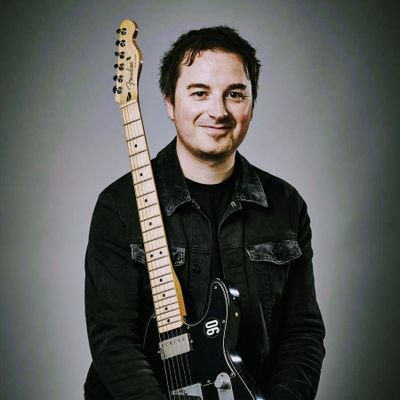
"The FRFR-Go accomplishes exactly what it sets out to do, and it does it very well. If you need a desktop cab for your amp modeler with the flexibility to go anywhere with you, this is an excellent option at a good price."
Read our full HeadRush FRFR-Go review
Best for gigging
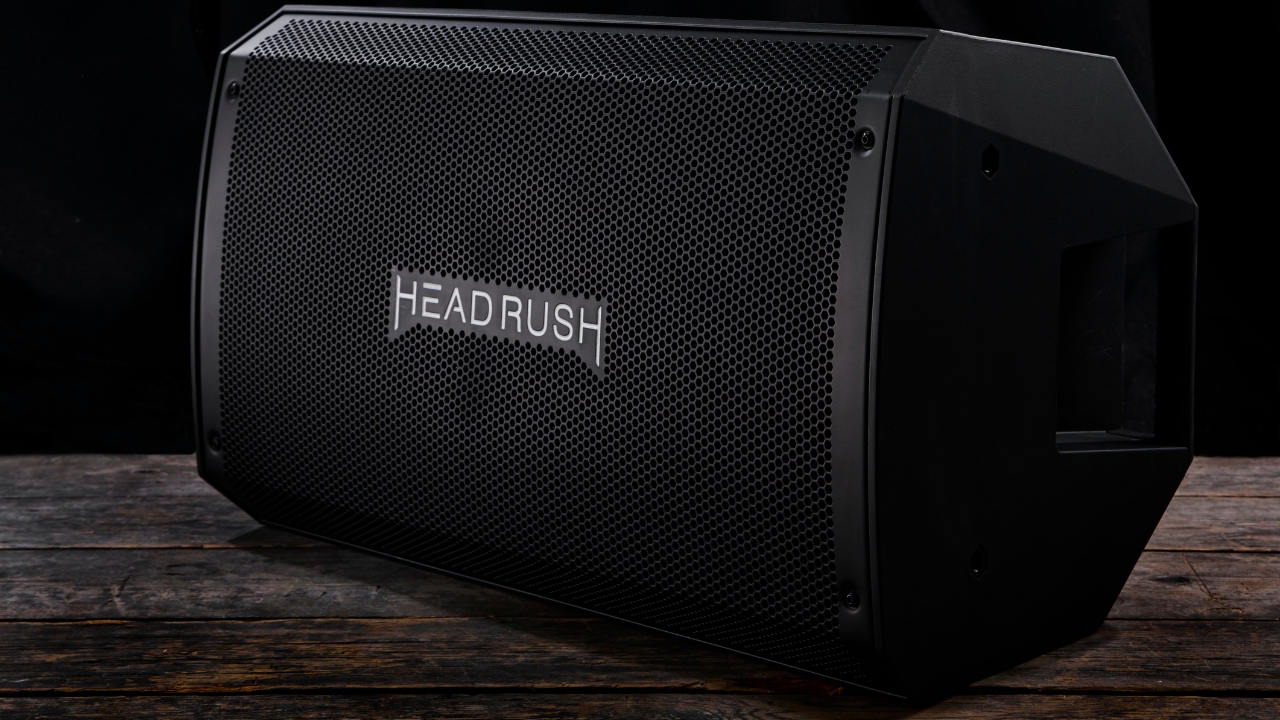
3. Headrush FRFR-112
Our expert review:
Specifications
Reasons to buy
Reasons to avoid
✅ Buy if you want to gig: With 1000W of RMS plus the ability to be used as a wedge monitor, the HeadRush FRFR-112 would be our choice for gigging with an amp modeler.
❌ Avoid if you want loads of headroom: At higher volumes, this speaker can distort, so something to think about if you're going to be regularly pushing it.
Build quality: ★★★★★
Usability: ★★★★★
Sound: ★★★★★
Overall: ★★★★★
The Headrush amp and effects modelers are some of the most popular out there and, as you might expect, they pair wonderfully with the matching Headrush FRFR speaker. The Headrush FRFR-112 is a lightweight 1x12” active speaker that will give your Headrush floor unit, or indeed any other passive modeler, the sound and response that you can only get from moving air with a speaker.
The specially-voiced 12” woofer sits alongside a high-frequency compression driver to bring all your saved patches and profiles to life on stage and, with 2000W of power, you can fill a decent-sized room with ease.
The design of the speaker cabinet is pretty smart too – you can use it as a kickback monitor for your own use, then take the XLR out to FOH, or you can pole-mount it to really be heard. You’ve also got two inputs with independent volume controls, EQ contour switch and ground-lift switch.
The Headrush 112 is one of the best FRFR speakers available right now, especially for the price. However, if you want something more compact, and even more budget-friendly, then check out their 1x8” version.
Best design

4. Laney LFR-212
Our expert review:
Specifications
Reasons to buy
Reasons to avoid
✅ Buy if you want the best-looking FRFR speaker: With its vertical speakers, front illumination, and realistic cab looks, the Laney LFR-212 is a stunning bit of guitar gear.
❌ Avoid if you need something compact: This is pretty hefty for an FRFR speaker, so if you need something that doesn't take up loads of room look elsewhere.
Build quality: ★★★★★
Usability: ★★★★½
Sound: ★★★★½
Overall: ★★★★½
This might be one of the coolest powered speakers out there, and it’s made by Laney who are known for making some great amps, so it’s a brand you can trust. It looks just like a regular vertical 2x12 speaker cab, so if you want an old-school visual, then this could be the best FRFR speaker for you. To add even more to the look, there’s a really cool illumination light that you can switch on and off.
As well as FRFR mode, you’ve also got a couple of different cabinet emulation options that will replicate how particular cabs sound. You don’t have to use these, but they can be really handy for nailing a particular sound.
The Laney LFR-212 is loaded with a pair of specially voiced 12” drivers and a 1” LaVoce compression driver. With it being vertically loaded, you’ve got one speaker closer to your ear when stood up, so it’s great for stage monitoring. There is also a 1x12 version, that’s slightly smaller and cheaper, if you don’t need quite as much power.
Best for features
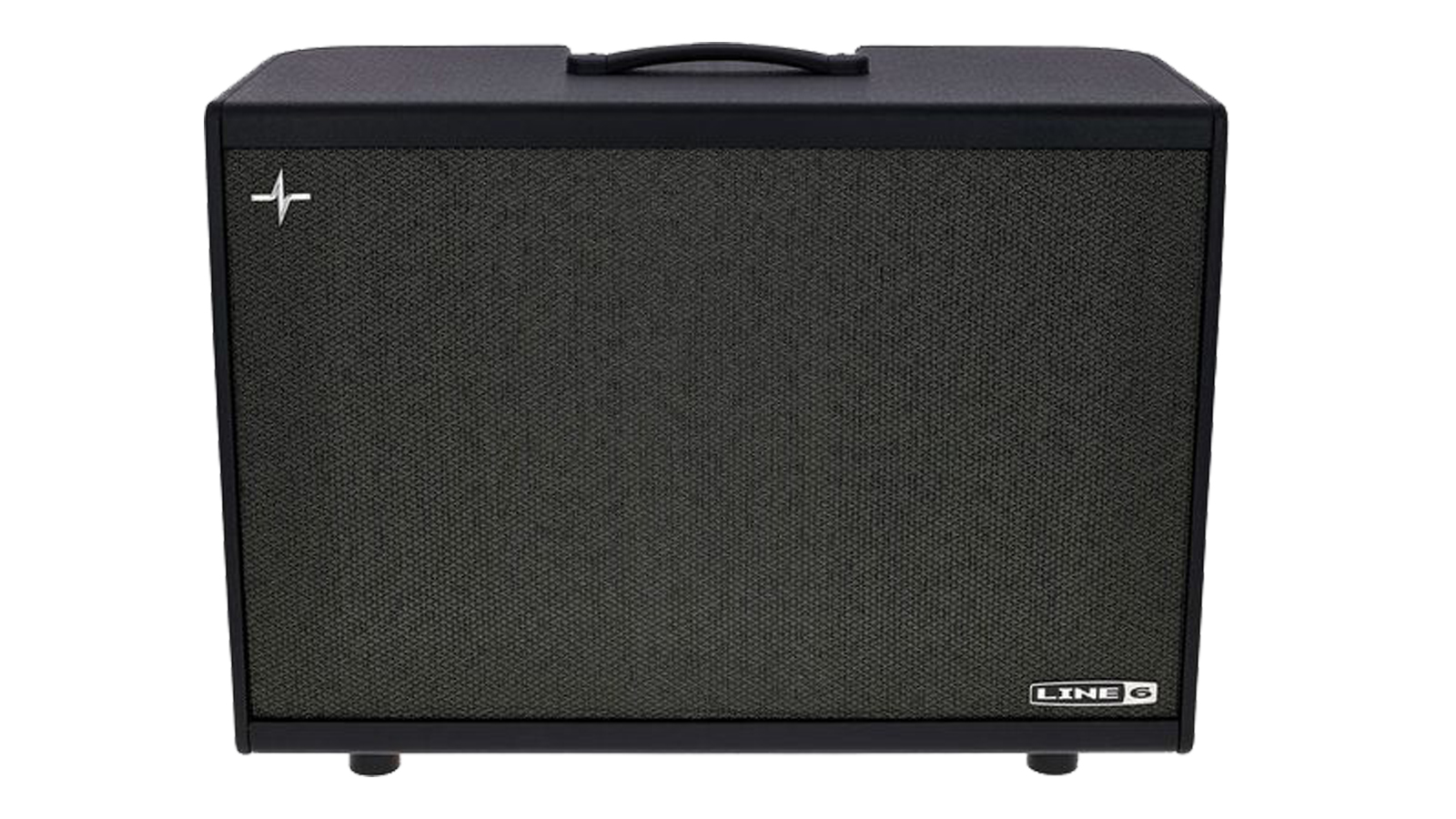
Specifications
Reasons to buy
Reasons to avoid
✅ Buy if you want the most features: With an LCD screen, preset capabilities, and full stereo, the Line 6 Powercab 212 Plus is a great choice if you want all the bells and whistles.
❌ Avoid if you're on a budget: Those features add up though, and at over $1,000 it isn't cheap.
Build quality: ★★★★½
Usability: ★★★★½
Sound: ★★★★★
Overall: ★★★★½
This gives you all the same benefits as the above 1x12 version, however, you’ve got double the amount of speaker models, plus it has two speakers that you can use in stereo (and actually adjust the stereo width). So, if you’ve got some cool ping-pong-style delays set up in your modeler, you can use the Powercab 212 Plus to really make the most of them.
The 212 Plus has some other really neat features that help make it one of the best FRFR speakers for pro-level modelers. There’s an on-board LCD screen and menu scrolling knob which allow you to navigate the 128 preset slots.
You can even load in your own impulse responses (IRs), making this the ultimate FRFR speaker for players who want to be able to tweak all of their gear to get their desired tone. Alongside this, you’ve also got more connectivity options for running it within MIDI set-ups and more.
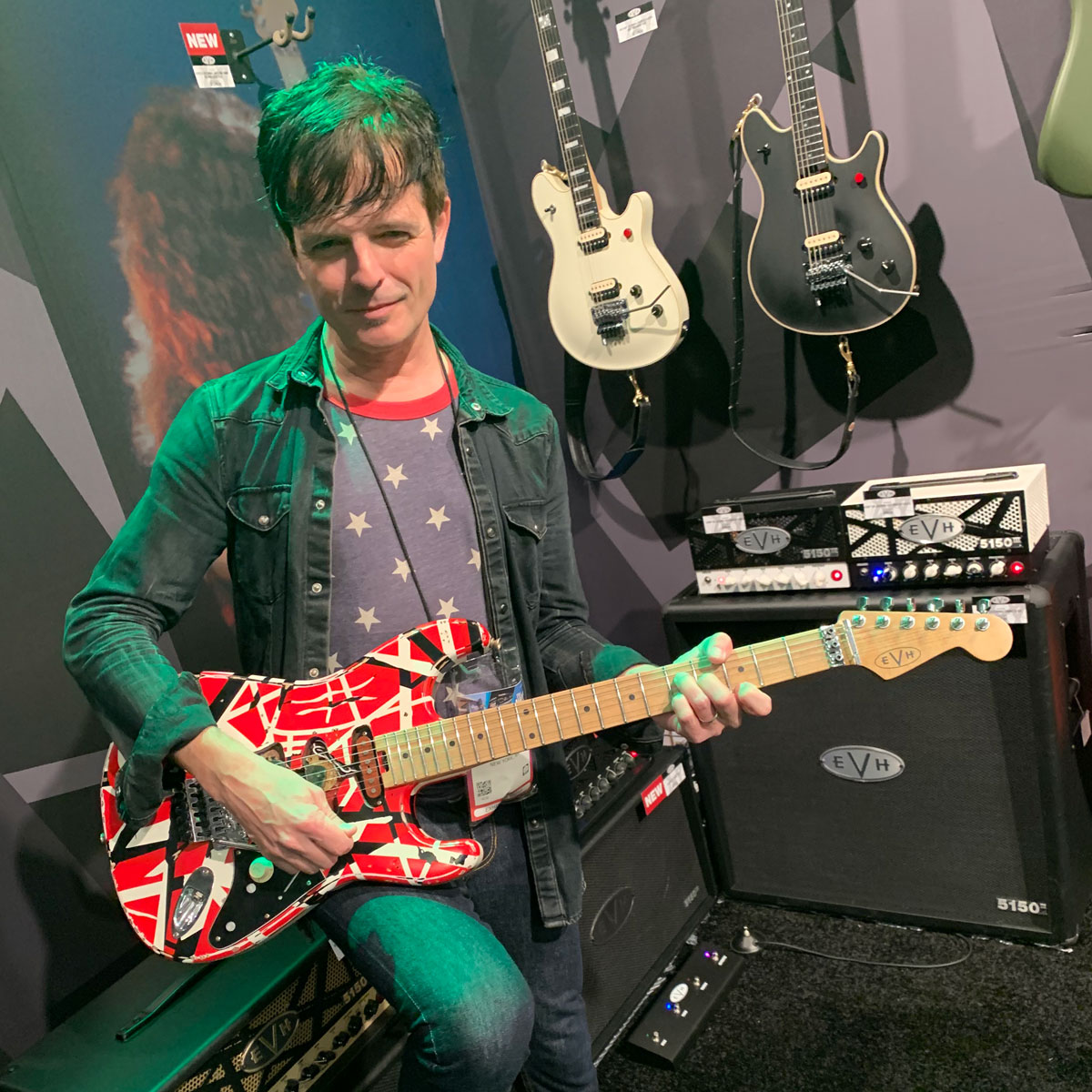
"A truly state-of-the-art and incredibly versatile speaker cabinet that enhances your favorite modeler’s preset tones and so much more, all while delivering the sound and feel of a classic guitar cabinet."
Read our full Line 6 Powercab 212 Plus review
Best Kemper
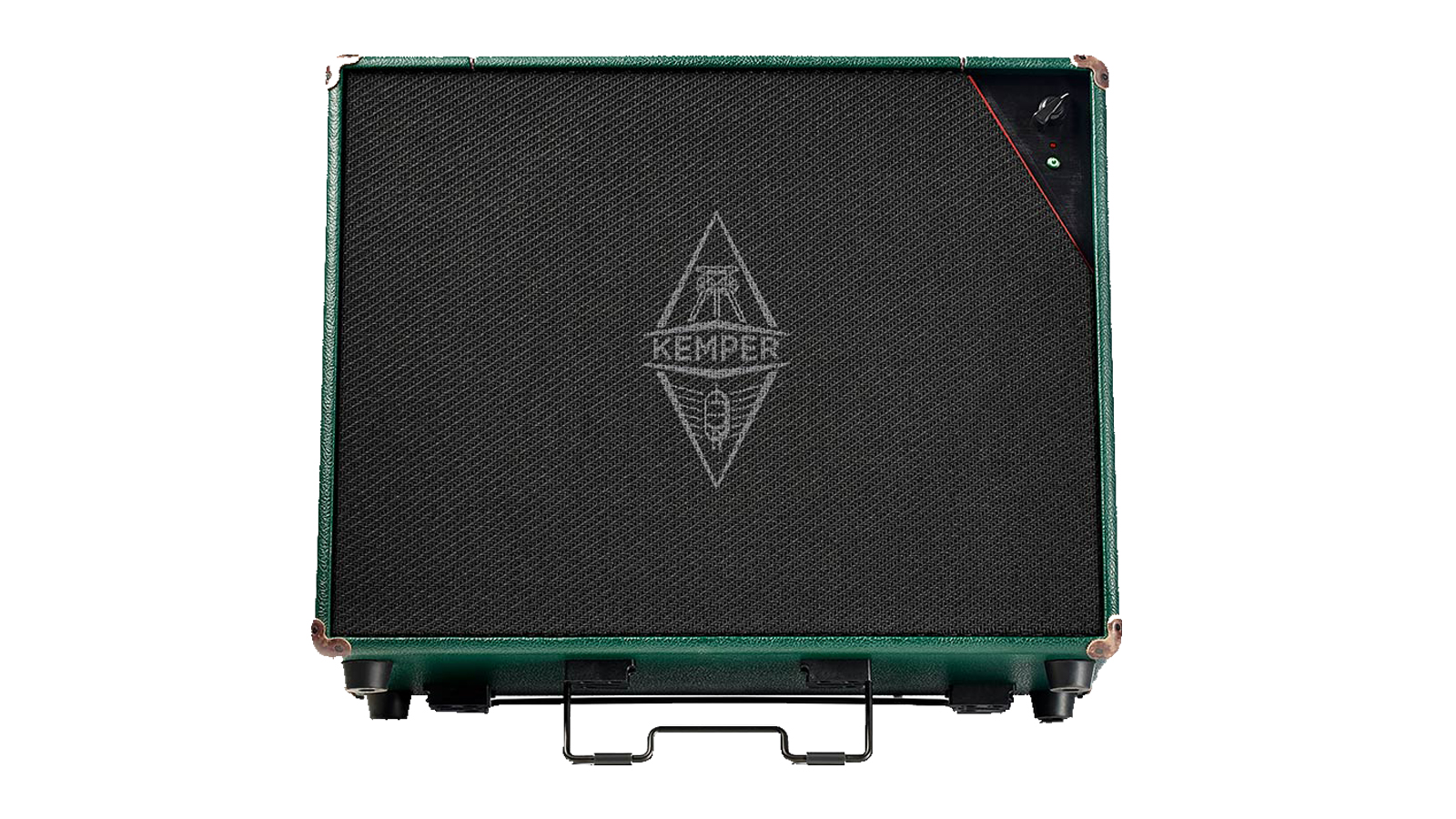
6. Kemper Power Kabinet
Our expert review:
Specifications
Reasons to buy
Reasons to avoid
✅ Buy if you own a Kemper: It'll work with any kind of modeler, but if you're already a Kemper owner it just makes sense to get a matching cabinet for your amp modeler.
❌ Avoid if you want something simple: The Kemper Kabinet has a lot of different options with powered and unpowered models and multiple speaker models.
Build quality: ★★★★½
Usability: ★★★★½
Sound: ★★★★½
Overall: ★★★★½
Obviously, the perfect match for your Kemper profiler. The Kemper Kabinet looks incredible, with a nice green tolex and brown leather handle – very classy. Of course, there’s a load of technology nestled away in that great looking box too.
The 12” speaker, or Kemper Kone as it’s called, has been custom-built by Celestion specially for this. The Kemper Kab gives you the option of 19 classic guitar speaker imprints, all of which have been designed to give you the sound and response of some of the most renowned and sought-after speakers in the guitar world. Of course, if you’d rather, you can just use the cabinet models in the Kemper itself. However you use it, you get an incredible experience; it’s just like playing through a ‘real’ amp, but with all the benefits that the Kemper brings to the table.
This powered version gives you 200W of power for your non-powered profiler, or the Stage unit. However, if you’ve got a powered Kemper, then you’d be looking at the passive Kemper Kab.
Also consider
Positive Grid Spark CAB
140W | 1x10" speaker | 2x1" HF driver | Closed back
The Spark CAB is a 140-watt Class D-powered FRFR cabinet and is compatible with all three of the Spark models - transforming them from bedroom amps into stage-ready tone monsters. Non-Spark users will be glad to know that this powered cab is also designed to work perfectly well with non-Positive Grid products, becoming the ideal platform for modern amp modelers and multi-effects pedals.
★★★★☆
Read more: Positive Grid Spark CAB review
Line 6 Powercab 112
250W | 1x12" speaker | 1x1" HF driver | Plywood
The Powercab 112 is one of the best FRFR speakers out there for players who want a range of great-sounding options to complement their amp modeler unit. You can use the Powercab in FRFR mode, where the custom-made speaker and high-frequency compression driver will deliver an authentic representation of your preset patch or profile. You’ve then got six onboard speaker models that replicate the same sort of sound and response that you’d get from regular guitar amp speakers, for a more ‘in the room’ amplifier sound.
★★★★½
Friedman ASC-10
500W | 1x10" speaker | 1x1.75" HF driver | Baltic birch
Handmade in the USA, the Friedman ASC-10 lives up to the brand’s sterling reputation and it truly is one of the best FRFR speakers available right now. In fitting with the brand’s aesthetic, the ASC-10 has a really cool look about it, and probably looks more like a boutique amp than a powered speaker, making it a great choice for those who want it to appear more traditional.
★★★★½
Boss Katana 100 Gen 3
100W | 1x12" speaker | Open back
The Boss Katana Gen 3 is of course, a great modeling amp in its own right, however the new and improved MKII version also has the option to be used as a powered speaker for your modeler or profiler. The speaker has been voiced primarily for the sounds built into the amp, so it might not be completely FRFR, but it’s close enough to do a good job.
★★★★½
How to choose a FRFR speaker
With a large selection of good quality FRFR speakers available, how do you go about choosing what’s right for you?
If you’ve spent a lot of money on something like a Quad Cortex and then spent time getting your sounds just right, then it really is worth buying the best quality speaker you can. A good FRFR speaker is crucial to hear all the detail and nuance that you’ve put into crafting your presets and profiles.
Additionally, you’re going to want to think about when and where your FRFR speaker is going to get the most use. Is it mostly for use in a band set-up? Is it just something to play at home through? Or do you want something that can tackle anything and everything?
If it needs to stand up to gigging, then you’ll need something that’s powerful enough to throw out a good amount of volume. If you’re hastily loading in and out of a van or car every night, then it could also be worth considering how rugged and sturdy the speaker is. The Laney FRFR is made with a wooden cabinet, like a more traditional cab so could be better than something plastic.
Another consideration worth making is how it’s going to sit on stage if using in a live scenario. You’ve invested in your sound, so you need to make sure you can hear it properly on stage. Something that stands taller like a vertical cab gets the sound closer to your ears which is useful.
If you’re using a floor-based speaker, then make sure you can angle it towards your ears, or maybe even invest in an amp stand to use with it. Regardless, the physicality of the speaker is worth bearing in mind!
Many players make the switch to digital to make carrying gear easier. If that’s the case, then check out the weight of the speaker; models do vary and there’s no point replacing your traditional amp with something even heavier if portability has caused you to make the switch.
FAQs
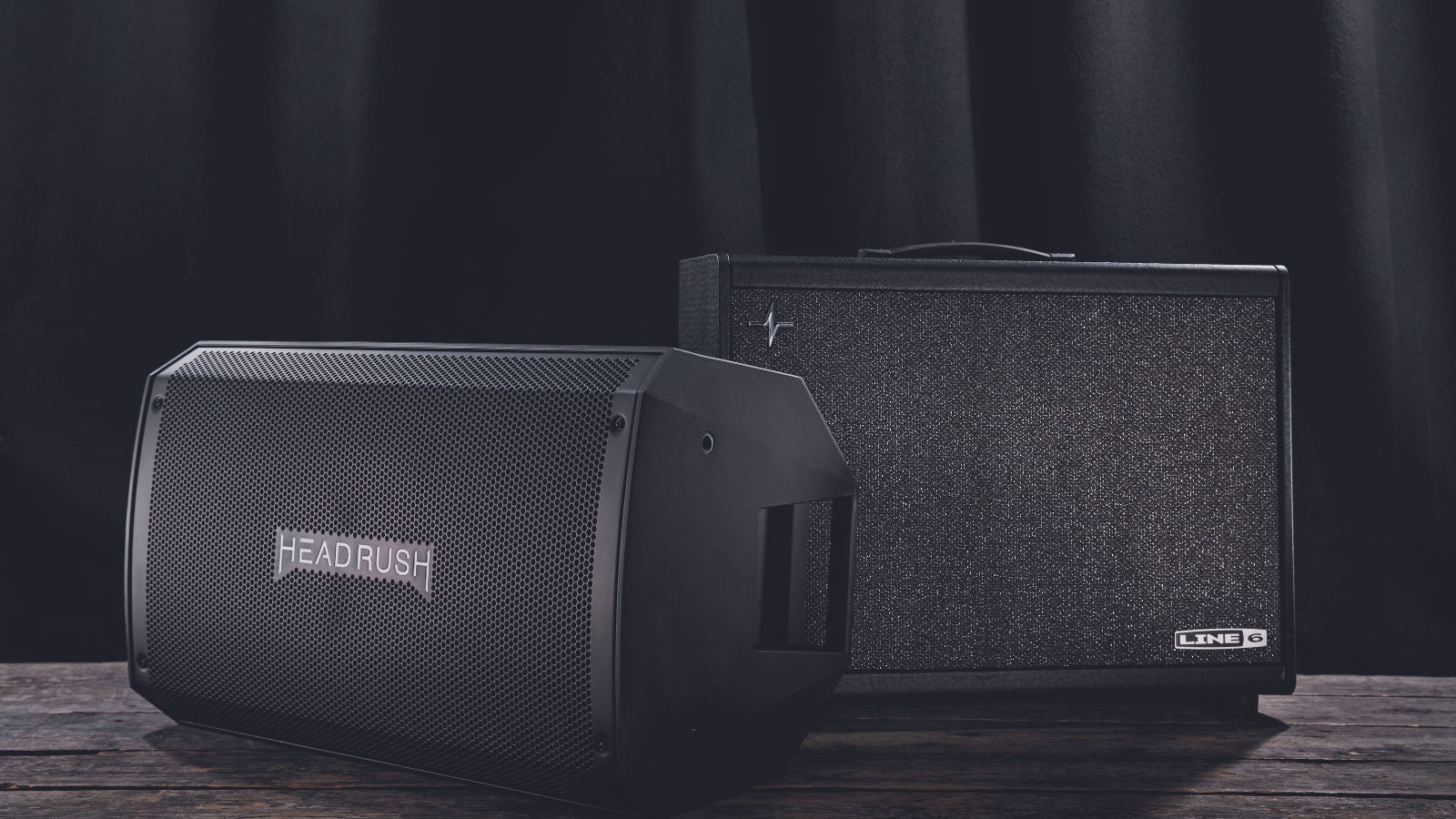
Why would I use an FRFR speaker?
Lots of players who use digital modelers do so alongside monitor speakers or headphones. If you’re recording at home, then that’s a really practical way of going about it. However, sometimes it really is nice to move some air, like a more traditional amp would.
When it comes to playing alongside a band or playing live, a lot of us are predisposed to be standing next to something that’s physically moving some air i.e. a speaker. Whether you’re standing directly in front of your amp on the floor, or you’ve got it angled towards your ears, having physical volume on stage, even if it’s just a touch, can help liven up the whole feeling. Without it, you can get through a gig of course, and everyone’s different, but it just isn’t the same.
Furthermore, if you’re taking a DI out of your modeler to front of house, then your sound on stage through your FRFR speaker will be near enough identical to what the crowd’s hearing.
Even for home practice, wearing headphones can cause ear fatigue and so having a small FRFR speaker allows you to fill the room up with your glorious guitar tone - at sensible volumes of course.
Can I put my modeler through a normal guitar amp or cab?
It’s usually possible to run your modeler through a regular guitar amp - you’re essentially just using it as a multi-effects pedal in that case. However, remember that you’re then coloring all those carefully crafted presets with the inherent sound of the amp you’re using.
The idea with modelers is that you use the technology on board to replicate the sound of another amp, and then put it through an FRFR speaker which doesn’t color the sound as much.
Unless your modeler is powered, you won’t be able to run it through a regular cab like an amp head. If it's powered, then you can - but check the wattage and ohmage before you plug it in.
Should I match the brand of my modeler with the FRFR speaker?
There’s nothing that says you need to match your Line 6 Helix with one of their Powercabs, or that the Kemper should go through one of their Kabinets. Quite often, matching the two brands will look good visually, but generally all FRFR speakers for guitars have been voiced with digital modelers in mind so it won’t really matter.
Can I use a PA speaker instead?
If you all you need is a powered speaker for your modeling unit, then could you just use a traditional active PA speaker? Yes you could, but remember, these are designed for everything in a band mix to go through - bass, drums, vocals, keys etc. As result, you might not get the definition and crisp articulation you would want to do your tones justice.
FRFR speakers on the other hand have been voiced specifically for the guitar so you’re going to cut through more in a live mix when you need to.
Are FRFR speakers active or passive?
Both active and passive FRFR speakers are available, but most tend to be the former which means that they require plugging into the mains. If you’ve got a Helix, a QC or anything else that's unpowered, you’ll want a powered FRFR speaker to actually get any noise out of it.
How powerful does my FRFR speaker need to be?
That depends completely on how you intend to use it. If you’re just wanting to play at home, then you don’t need much; anything between 10-30W will give you plenty of headroom for your various amp profiles.
If you’re playing live then it’s likely that your signal is being sent to the PA but you’ll still want to be heard above a drummer for your own sake. As such, you want to be looking at a minimum of 100W to cope comfortably. The more power you have, the more headroom you’ve got so you’ll hear your tones with clarity and definition.
Why does my FRFR speaker make my profiles sound different?
If you’ve been running a modeler through a guitar amp or cab, you’ve essentially been hearing it post-EQ. That means any tweaks to your settings you’ve made have been done to compensate for the amp you’re running it through.
FRFR speakers are designed to replicate the original source as closely as possible, so you might just need to re-tweak your sounds and fine-tune them to your new speaker. In the long run, you’ll probably have to do less adjusting though.
Can I use an FRFR speaker for bass?
Don’t think we’ve forgotten about you bass players too! More and more bass players are using digital profilers like Kempers, and whilst even the most modest FRFR speaker should do a decent job – for example, the Headrush FRFR-108 is an excellent speaker in a tiny footprint – they may be pushed to the point of rattling when handling particularly loud, particularly low sound sources. Consider matching two FRFR speakers together, or look for larger speakers to make sure you get the absolute best sound reproduction for loud bass playing.
Finally, some FRFR speakers may not have their own power section – though all of those on this list do. If you haven't got a powered profiler/modeler, just be extra sure that you’re purchasing an ‘active’ speaker cabinet with built in power, rather than a ‘passive’ cabinet, which will need external power.
Glossary
Full Range: Referring to the frequency range, a full range speaker can replicate very low and very high notes. In the case of guitars, that means that your entire frequency range is replicated through the speaker clearly, even if you’re using lower tunings or extended range instruments.
Flat Response: This refers to EQ, in that there isn’t any. The speaker hasn’t been tuned to have any boosts or cuts in the frequency response.
Profile: A profile is a digital snapshot of a real amp, usually paired with a microphone. The profile captures the sound and response of that amp, with those particular settings, in that room, with that mic. You can then recall different profiles on your digital modeler.
IR: IR stands for Impulse Response and, much like when an amp is modelled, an IR is essentially a snapshot of a speaker. An IR captures the speaker, the cabinet, the room and the microphone with which it was recorded. Having a variety of IRs basically gives you the choice of running your amp profiles going through different types of speakers.
Modeling: Modeling aims to digitally recreate the sound and response of certain amps. A good modeler can provide a similar tone and feel of a range of different amps. So, for example, you can have digital emulations of a Marshall JCM800, a Plexi, a 1960s AC30, a Mesa Boogie Triple Rectifier and tons more all in one unit.
How we choose the best FRFR speakers
Here at Guitar World, many of our writing team are using floor modelers on our own rigs, so we recognize the importance of Full-Range, Flat-Response (FRFR) speakers, especially in the evolving landscape of modern guitar tones. When it comes to pinpointing the best FRFR speakers, our team combines experience from live stages, recording studios, and a personal appreciation for the nuances of tone shaping.
Selecting an FRFR speaker involves a nuanced understanding of clarity, response dynamics, and the ability to faithfully reproduce a wide range of frequencies. We've rigorously tested numerous speakers, pushing them through various scenarios to ensure they meet the diverse needs of guitarists exploring genres from pristine cleans to high-gain mayhem.
Whether you're sculpting ambient textures or delivering high-gain riffage, our guides cover a spectrum of FRFR speakers, from budget-friendly options to premium choices that cater to the demands of professional guitarists. Each recommendation in our guide has earned its place through meticulous testing, guaranteeing that whether you're in the studio or on stage, the selection of FRFR speakers from Guitar World will help you achieve the perfect guitar tones.
Find out more about how we make our recommendations and how we test each of the products in our buyer's guides.
Why trust Guitar World?
☑️ A global audience of 3.8 million guitarists monthly
☑️ 1,200+ reviews on GuitarWorld.com
☑️ 30+ years of product testing at Guitar World
Guitar World boasts over 44 years of expertise and stands as the ultimate authority on all things related to guitars. The magazine and website feature expertly written gear round-ups and top-quality, authoritative reviews penned by a team of highly experienced industry professionals.
Guitar World's inaugural print issue hit the shelves in July 1980, and ever since, it has been captivating players and enthusiasts with engaging lessons, insightful interviews with the biggest guitar heroes, and priceless buying advice for newbie players.
Furthermore, GuitarWorld.com continues this legacy online and serves as the hub of the world's foremost authorities on guitar playing. The site not only hosts content from Guitar World but also showcases articles from respected publications such as Guitarist, Total Guitar, Guitar Techniques, and Bass Player. With a reach extending to 3.8 million players each month, GuitarWorld.com is a go-to destination for guitar fanatics globally.
Meet the experts

After spending a decade in music retail, I’m now a freelance writer for Guitar World, MusicRadar, Guitar Player and Reverb, specialising in electric and acoustic guitars, bass, and almost anything else you can make a tune with. When my head’s not buried in the best of modern and vintage gear, I run a small company helping musicians with songwriting, production and performance, and I play bass in an alt-rock band.

Matt has been recording bands since the mid-noughties, cutting his teeth with an SM58 clone and a copy of Cubase on Windows XP. Since then, he's used countless microphones to record music for bands across the UK, covering everything from djent to jazz. As a MusicRadar writer, Matt has reviewed over 50 different products, including guitars, amps, pedals, mics, and studio monitors.

Ross has been a music lover and guitar player since the age of 8. He has spent the five years since graduating from university working in music retail, selling guitars, amps and more. Ross is particularly interested in electric guitars, pedals and amplifiers and his current rig includes a trusty 2009 American Standard Stratocaster and Vox AC30S1 with a few Walrus Audio and Way Huge pedals in between.

Connor is a contributor to Guitar World and MusicRadar. Having been a guitarist since the age of 10, he's played bass and guitar in bands across the South West of England. He has a background in audio engineering, having worked in some of the UK’s best studios including Rockfield and Invada, and has a passion for recording guitar. He is always keen to discover the greatest gear for capturing tone, be that microphones, audio interfaces or cab simulators.
Latest updates
06/11/25: We've added star-rating boxes to each of the products highlighted, along with expert verdict panels where applicable. The FAQ section has been rewritten and expanded, and a How To Choose section has been added to help you when you're buying a new FRFR speaker. A gossary explaining key terms has been included alongside a section on why you can trust the GuitarWorld team. Finally, a "Meet The Experts" panel has been added.
Read more:
You can trust Guitar World
- Check out the best guitar amps under $1,000
- Get one of the very best: best high-end guitar amps
- Or one of the best beginner guitar amps
- These are the best combo amps
All the latest guitar news, interviews, lessons, reviews, deals and more, direct to your inbox!
After spending a decade in music retail, I’m now a freelance writer for Guitar World, MusicRadar, Guitar Player and Reverb, specialising in electric and acoustic guitars, bass, and almost anything else you can make a tune with. When my head’s not buried in the best of modern and vintage gear, I run a small company helping musicians with songwriting, production and performance, and I play bass in an alt-rock band.
- Matt McCrackenJunior Deals Writer
- Ross Holder
- Connor Godfrey
